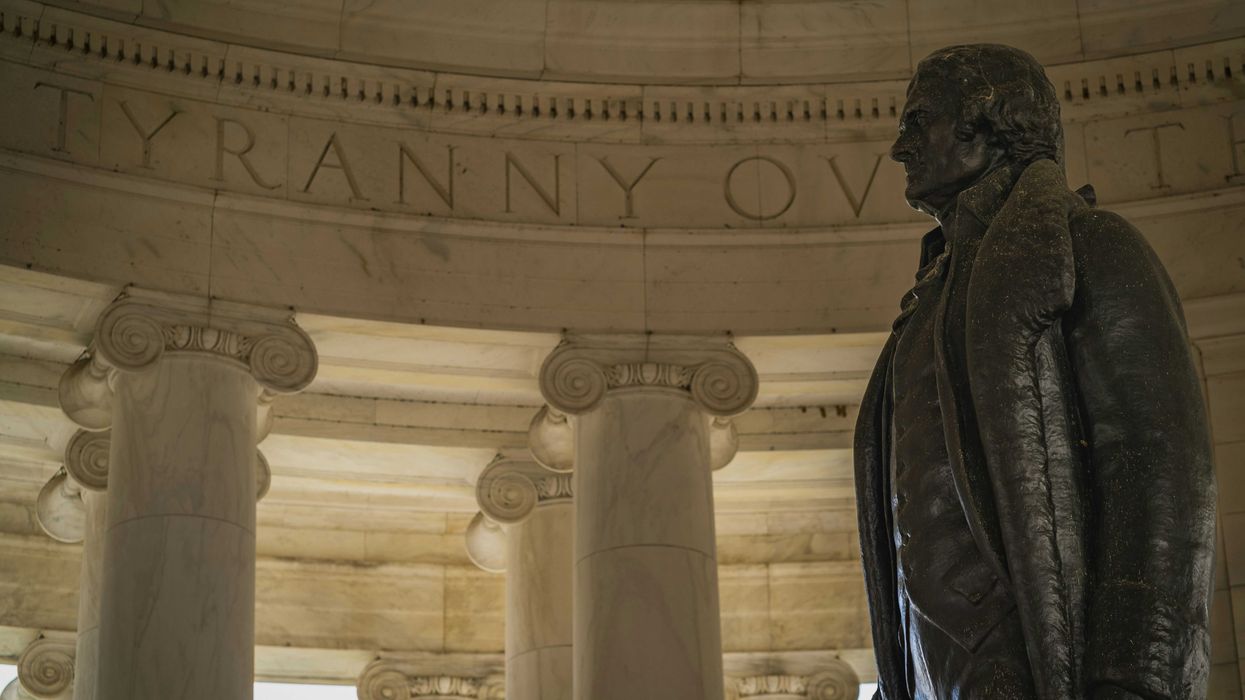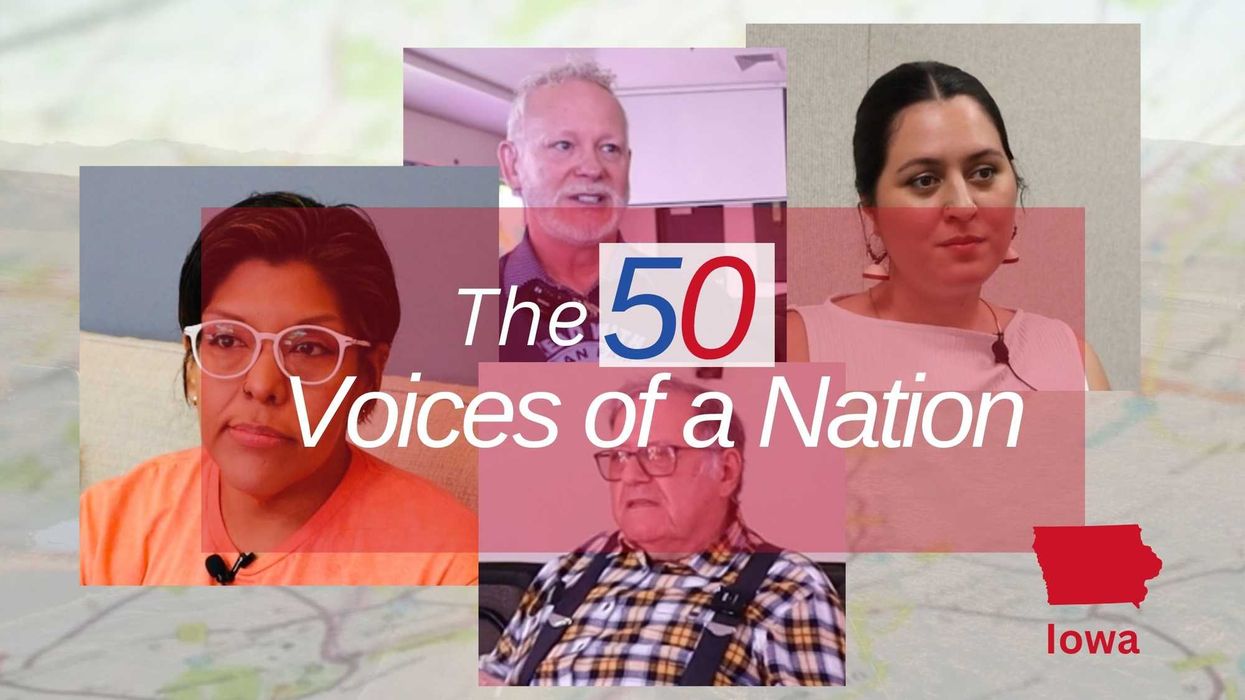The crowning moment of the tour through The National Constitution Center—America’s one and only museum devoted to the great charter—comes at the very end. There, visitors enter a room, not unlike the room in Independence Hall where it all went down 238 years ago, and come face-to-face with America’s “Founding Fathers.” James Madison is there. So is Alexander Hamilton. And Ben Franklin. Of course, the Constitutional Convention’s presiding officer, George Washington, is there too, standing tall and imposing. The life-sized bronze statues in Signer’s Hall are surreal, stirring even. Standing among these figures, it’s not hard to imagine that we’re back in 1787 debating the particulars of America’s fresh experiment in republican government.
Any room packed with the heroes of America’s founding is cool. But the real inspiration comes from the action we’re asked to take in that room. We’re invited to endorse or reject the Constitution of the United States. That’s right. All visitors are confronted with the ultimate question: would you ratify this text?
It’s an important question. In some ways it is THE question. Americans generally think of ratification as a moment in the nation’s distant past when citizens—white men of means, really—met in state conclaves to debate whether to adopt a revolutionary new plan for government. But ratification is an ongoing project. Indeed, the convergence of liberty and citizenship is the point at which every one of us is obligated to decide whether we too should endorse or repudiate the Constitution. Americans enjoy the freedom to criticize the sacred text, just as we enjoy the right to venerate it. As citizens, we are obliged to take that privilege very seriously.
Comfortingly, the significance of ratification is evident in our experimental generational constitutions too. Each living generation understands the need for widespread validation of any constitutional text. Old and new.
Common among the various AI-created constitutions is the importance of deliberation by the entire citizenry. In fact, it’s all about deliberation. That’s a legacy of the Founding-era ratification project, when gentlemen farmers and elitist merchants alike participated in the debate, and also crucial departure from that historical moment because, ultimately, it was the aristocracy that was given the final say. Women were not invited to ratifying conventions. Neither were the enslaved or the Indigenous.
The Greatest Generation calls for a full year of public discussion—a robust airing of the questions and concerns raised by the would be modern Anti-Federalist—before any ratification of a new Constitution can take place. The Silent Generation mandates a national referendum on any potential charter. Baby Boomers insist on public hearings followed by a “nationwide educational campaign.”
Gen Xers interestingly swap the process. They want inclusive and widespread debate, deliberation, and consensus before the drafters convene to rewrite the Constitution. They want the discussion before the convention. Millennials agree that any proposed Constitutional replacement must include widespread public debate, but, having grown up in the media age, they also insist that “independent media outlets provide balanced and informative coverage about the Constitution and its potential impact on society.” The Gen Z approach is to set up “Digital Democracy Portals” where citizens can register their likes and dislikes with cutting edge technology.
No matter what, it seems the days of old white men sitting in Windsor chairs deciding on the fate of a nation are past.
Once again creativity in constitution-making is not lost on America’s youth. The Gen Z and Alpha generations promote the formation of “councils” as part of the ongoing ratification project. These councils aim to monitor the impact of any new Constitution on the general populace. Gen Zers insist on a “Youth Council”—a formal body of 16-25-year-olds—to ensure “the next generation’s priorities” are met by the proposed constitution. The Alpha Generation prefers a permanent “Intergenerational Council” to do the same. Both are focused on making sure that any future constitutional text does not become musty and outdated. Jefferson would be proud.
The mountain to climb whenever a polity replaces its Constitution is steep. Piecing together the architecture for a new system of government is one thing, but realizing buy-in from the entire American populace is something altogether different. In contrast to the historical ratification debates of the late eighteenth-century, which preserved the patriarchy of the period, our generational constitutions mandate universal participation and popular reflection.
The most celebrated Anti-Federalist of the Founding period was Patrick Henry. He famously declined a summons to attend the Constitutional Convention because he “smelt a rat”. To him, the Constitution reflected the wrong vision for a newborn America, and he channeled his mighty oratorical skills towards rejecting the proposed Constitution. His bronze statue is not preserved in Signer’s Hall.
But maybe it should be. Henry’s disdain for the Constitution was profound and sincere, and it was very public. He arrived at the Virginia Ratifying Convention with arguments in hand. He did not hold back. He commanded the room. And then he lost. The Commonwealth, over his fierce objection, eventually ratified the Constitution.
Patrick Henry is one of the eminent patriots of the early republic. He is so precisely because he had the fortitude and audacity to dissent. He’s as much of a hero as those who put pen to parchment. He fought for what he believed to be the best for the future of his country, and while he ultimately lost, his critiques and passions modeled the fearless thought Americans should practice. What is most important to remember is that coming together as a nation does not mean we all must agree, but that we are courageous enough to eventually identify the path to a greater republic.
Beau Breslin is the Joseph C. Palamountain Jr. Chair in Government at Skidmore College.
Prairie Gunnels just successfully and with honors completed her first year at Skidmore.


















